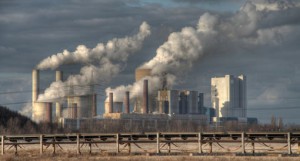Earlier this week the EPA announced a legacy proposal that would reduce carbon pollution from power plants by 30 percent below 2005 numbers. While much of the response from organizations was positive, may associations believe the proposed Clean Power Plan regulation will harm rural areas, not help.
According to the American Farm Bureau Federation, the reduction in carbon will lead to higher energy prices; but not only would farmers face higher prices for electricity, but any energy-related input such as fertilizer. They also claim rural electric cooperatives that rely on old coal plants for cheap electricity would be hit especially hit hard.
 “U.S. agriculture will pay more for energy and fertilizer under this plan, but the harm won’t stop there,” American Farm Bureau Federation President Bob Stallman said. “Effects will especially hit home in rural America.”
“U.S. agriculture will pay more for energy and fertilizer under this plan, but the harm won’t stop there,” American Farm Bureau Federation President Bob Stallman said. “Effects will especially hit home in rural America.”
Yet according to Lux Research, the Clean Power Plan have noted that while the proposed regulation has spurred furious debate, what is missing from the conversation it the role of innovation. The firm said these rules can help spur innovation that will make it easier for the world to reduce its emissions.
The new EPA rules are unlikely to have a dramatic impact on global emissions on their own, said Lux Research, given that almost all future growth in carbon emissions will come from developing and underdeveloped countries – most notably China, which became the largest carbon emitter in 2007. Hence, much of the debate about the rules has centered on how likely they are to help induce China and other nations to agree to binding targets of their own.
“The political discussion about climate change misses a critical point; whatever their role in climate negotiations, these new rules will accelerate technology development and deployment, making it more practical and affordable for nations everywhere to reduce emissions,” said Aditya Ranade, Senior Analyst at Lux Research. “Their influence on innovation is where they will need to have the biggest impact for the world to achieve its CO2 reduction goals.”
Lux Research analysts predict that four major technology sectors will get a boost:
- Combined cycle gas turbines (CCGTs) will gain. Most states will first target improvements to fossil fuel power plants. CCGTs, which use energy from burning natural gas, as well as steam generated from hot exhaust gas, will be in demand, given their higher efficiency, benefitting CCGT giants such as General Electric.
- Commercial and utility scale solar demand will rise in unexpected places. Subsidized internal rates of returns (IRRs) are already high for commercial and utility solar installations in states like California and Massachusetts, ranging from 10% to 15% (see Lux Solar Demand Tracker). The new carbon emissions rules will likely open up hitherto unattractive markets such as Georgia and South Carolina; expect a greater flow of debt capital and competing business models such as leasing from SolarCity and solar loans from Sungage to make their presence felt.
- Negawatts will prove to be the cheapest compliance. Saving electricity is considerably cheaper for a utility than producing it – as little as $0.028/kWh, according to the American Council for Energy Efficient Economy (ACEEE), twice as cheap as coal. Expect the utilities in coal-dominant regions, like American Electric Power (AEP), to expand their residential energy efficiency programs, leading the adoption of air barrier materials, LED lights, and double pane low-e coated windows.
- “Clean coal” will get a new lease on life. Current costs of carbon capture and sequestration (CCS) for coal plants using integrated gasification combined cycle (IGCC) are an astounding $60/ton, according to the U.S. Department of Energy, making the approach impractical. The new rules will accelerate the development of second- and third-generation technologies for CCS, such as metal organic frameworks (MOF), which have the potential to get costs down to $20/ton.
In short, the impact of the new EPA rules will neither come via a global binding climate deal nor from an absolute reduction in U.S. emissions, according to Lux Research, but from catalyzing technology development and deployment. Innovative companies developing CCGT, CCS, solar, wind, and building energy efficiency solutions will be in position to deploy their technologies aggressively, helping the world reduce emission targets while growing their businesses.

